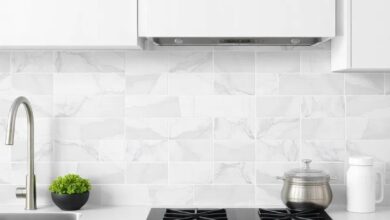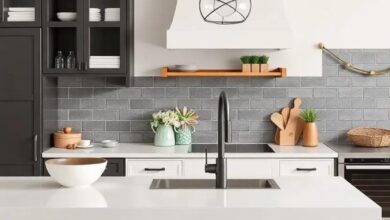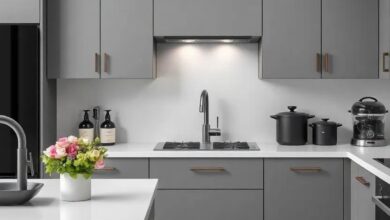Transforming Culinary Spaces: The Essential Guide to Industrial Kitchen Units
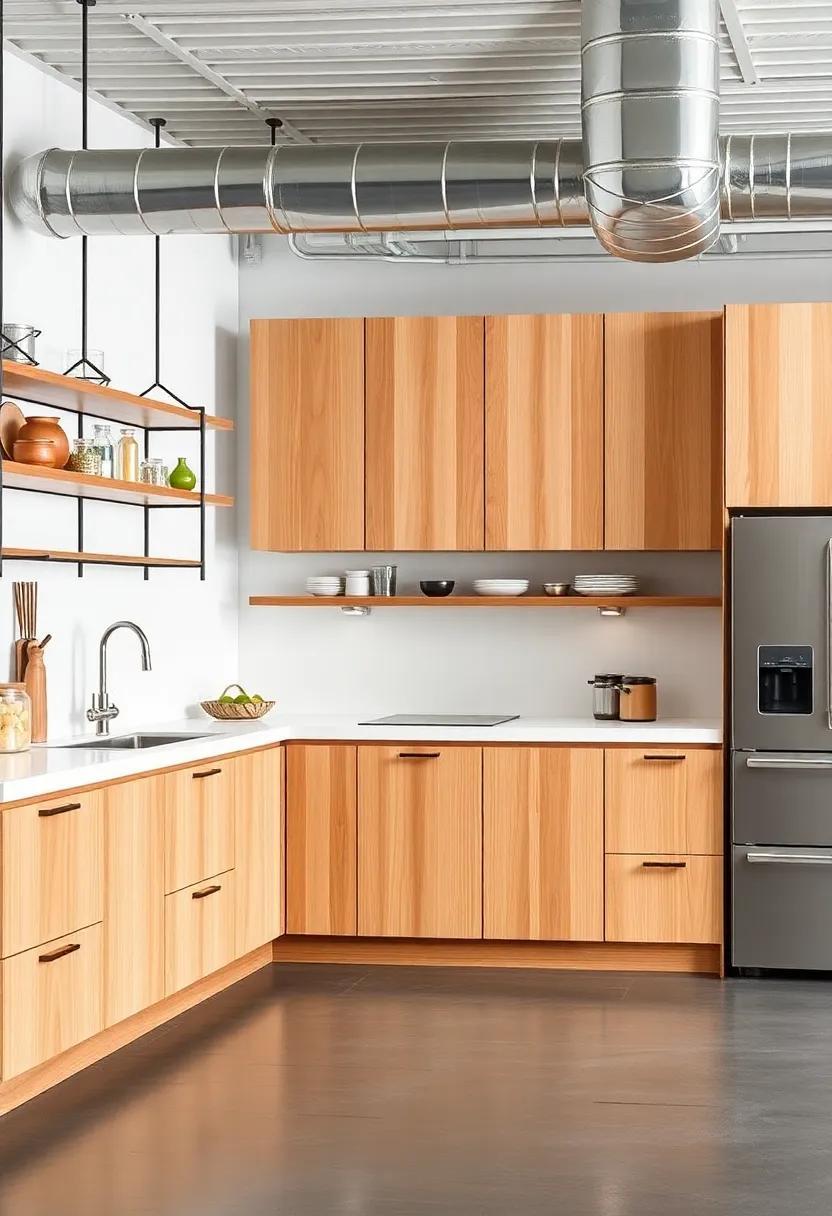
In the heart of every bustling restaurant, catering service, or culinary startup lies a space where creativity meets functionality: the industrial kitchen. These robust environments are the backbone of the food industry, designed for efficiency and equipped to handle the rigors of high-volume meal planning. But as the culinary landscape evolves,so too do the needs of these kitchens. From artisanal food creators looking to scale their operations to established enterprises aiming to maximize their workflow, the journey toward the perfect culinary space can frequently enough seem daunting. In this essential guide, we will explore the key elements of industrial kitchen units, offering insights into how to design, equip, and optimize these dynamic environments. Whether you’re revamping an existing kitchen or starting from scratch, prepare to embark on a transformative journey that elevates not just the space, but the culinary experience itself.
Creating Versatile Workstations for Efficient Culinary Operations
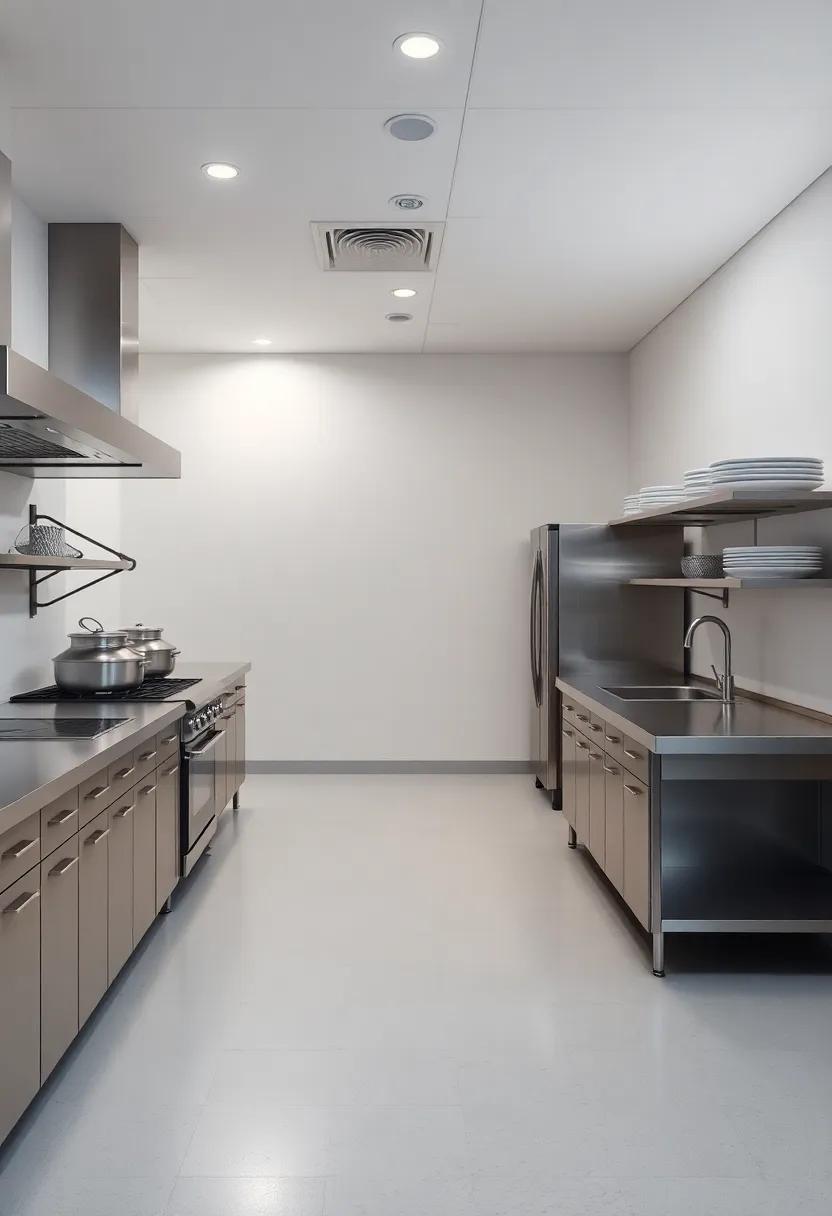
To optimize workflow in culinary operations, it’s crucial to design versatile workstations that enhance functionality and adapt to changing needs. Consider incorporating multi-purpose units that can serve different roles throughout the day, such as prep areas that convert quickly to serving stations during peak hours. The key elements for an effective workstation include:
- Adjustable Heights: ensure work surfaces can be modified for various tasks and chef preferences.
- Integrated Storage: include drawers and shelving to keep tools and ingredients accessible yet organized.
- Durable Materials: Opt for surfaces that withstand the rigors of a busy kitchen while being easy to clean.
Equipping your kitchen with mobile carts can also significantly increase efficiency, allowing for ease of movement and versatility across different cooking stations. Such carts can be stocked with essential equipment, enabling quick transitions between tasks or locations. Consider the following features when selecting mobile units:
| Feature | Benefit |
|---|---|
| Locking Wheels | Stability when in use, easy mobility when needed. |
| Stainless Steel Finish | Durable and easy to maintain, resistant to stains and odors. |
| Ample Surface Area | Provides space for prep work,plating,or holding utensils. |
Incorporating Sustainable Materials into Industrial Kitchen design
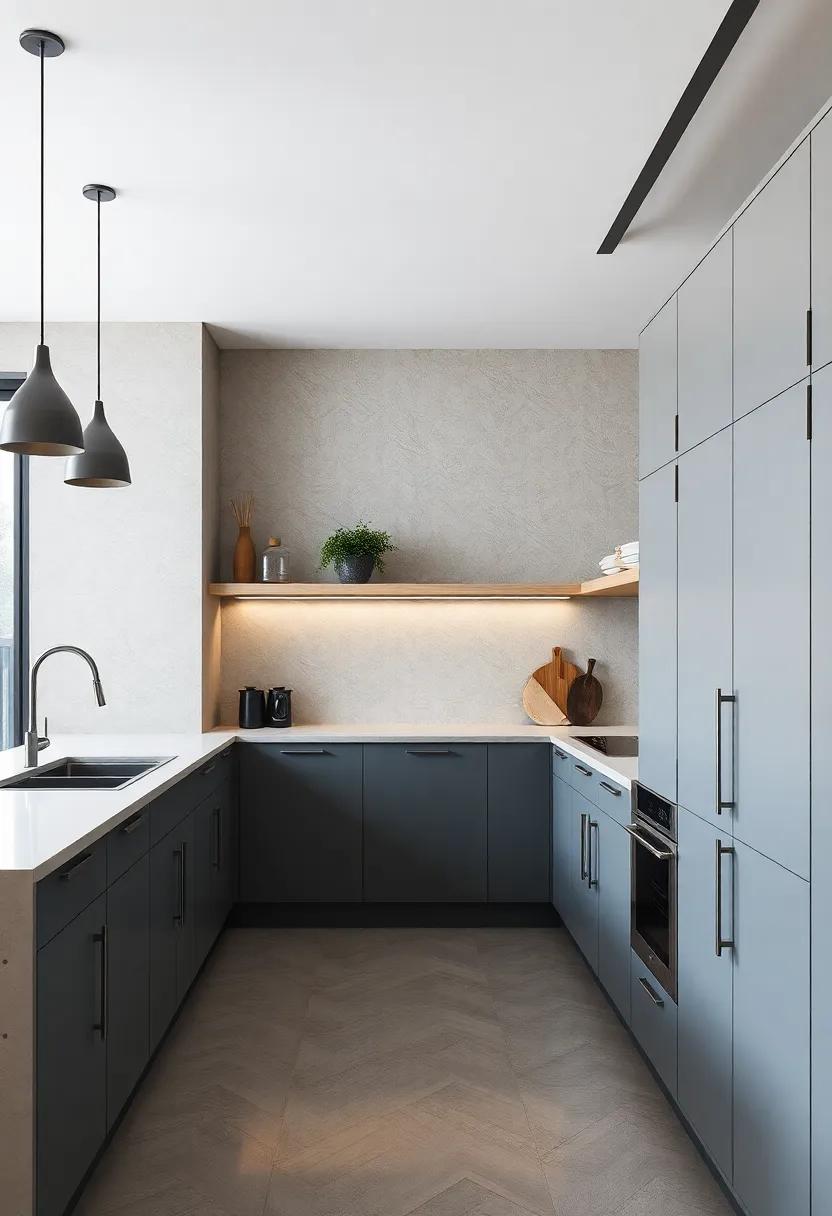
When designing an industrial kitchen, selecting sustainable materials is crucial for marrying functionality with environmental obligation. Emphasizing eco-friendly components can significantly enhance the overall design aesthetic while minimizing ecological impact. Consider incorporating materials such as:
- Reclaimed Wood: Adds warmth and character while reducing deforestation.
- Recycled Metals: Durable and often less energy-intensive to produce.
- Sustainable Bamboo: Fast-growing and requires minimal resources.
- Low-VOC Paints: Improves air quality and reduces harmful emissions.
In addition to choosing the right materials, the design process should focus on creating a circular workflow that enhances efficiency. An effective layout not only maximizes the utility of chosen materials but also streamlines kitchen operations. Incorporating elements such as:
| Design Element | Benefit |
|---|---|
| Open Shelving | Encourages accessibility and reduces the need for additional materials. |
| Modular Stations | Allows for versatility and minimizes waste through adaptability. |
| Natural Lighting | Reduces energy consumption and enhances ambiance. |
Optimizing Layouts for Maximum Flow and Accessibility in Kitchens
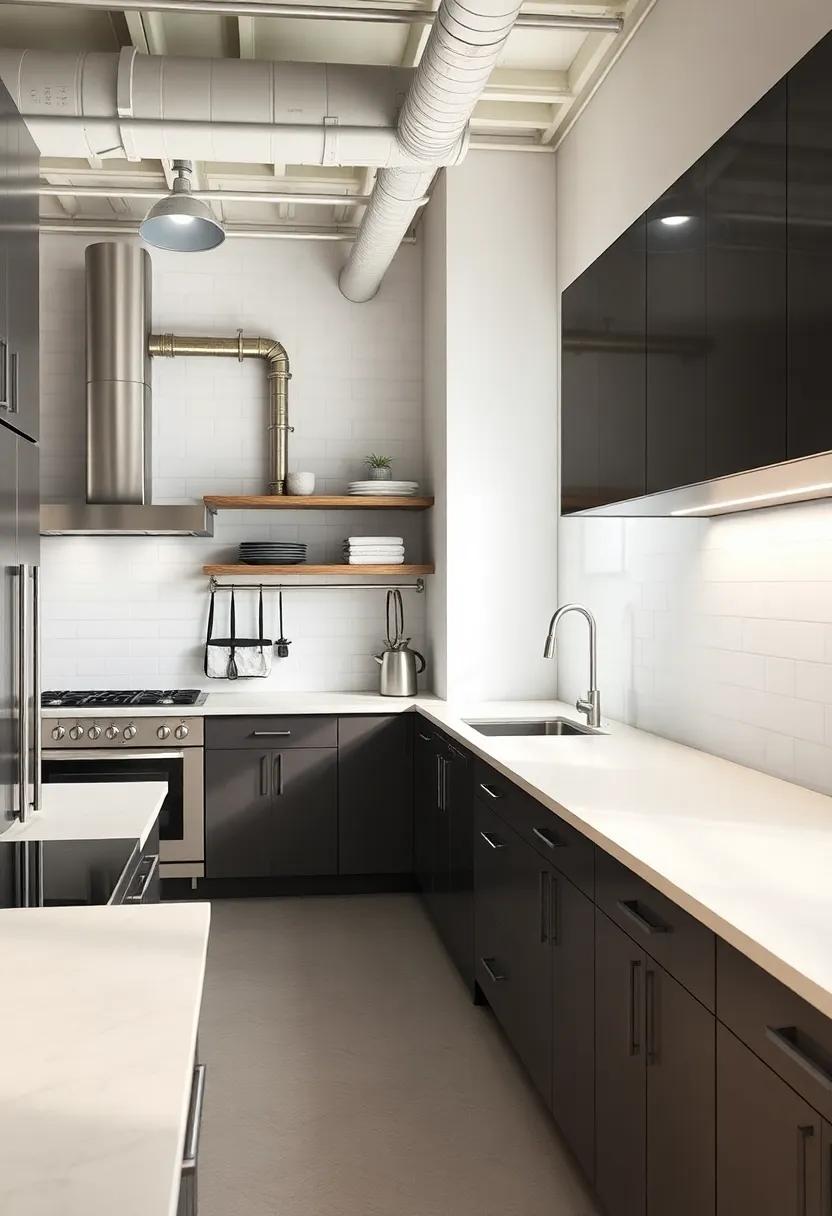
In culinary environments where efficiency meets creativity, the layout of your kitchen can significantly enhance workflow and accessibility. A well-planned kitchen should allow chefs and staff to move seamlessly between stations, reducing needless steps and increasing productivity. Consider the kitchen work triangle model, which emphasizes the relationship between the refrigerator, stove, and sink. Ensuring these key areas are optimally positioned can lead to a dramatic advancement in both speed and comfort during food preparation.Other vital layout strategies include:
- Zoning: Designate specific areas for cooking, preparation, serving, and cleaning to streamline tasks.
- Access to Tools: Ensure that equipment and utensils are within arm’s reach of the main workstations to minimize movement.
- clear Pathways: maintain unobstructed aisles to accommodate multiple cooks and staff without disruptions.
- Adjustable Elements: Consider elements like modular shelving or movable islands to adapt the layout for different types of events or volumes of diners.
Additionally, accessibility should be a top priority in the design of industrial kitchen units. Incorporating features such as ergonomic work surfaces and sliding shelves can ease strain on workers and improve overall efficiency. Here’s a quick overview of key accessibility features to consider:
| Feature | Benefits |
|---|---|
| Adjustable Counter Heights | Accommodates both standing and seated tasks for diverse staff. |
| Pull-Out Workstations | Maximizes space and provides flexible surfaces when needed. |
| Wide Aisles | Facilitates easy movement of carts and personnel. |
| Color-Coded Zones | Improves visual clarity for efficient navigation and safety. |
Essential Equipment Choices for High-Volume Cooking Environments
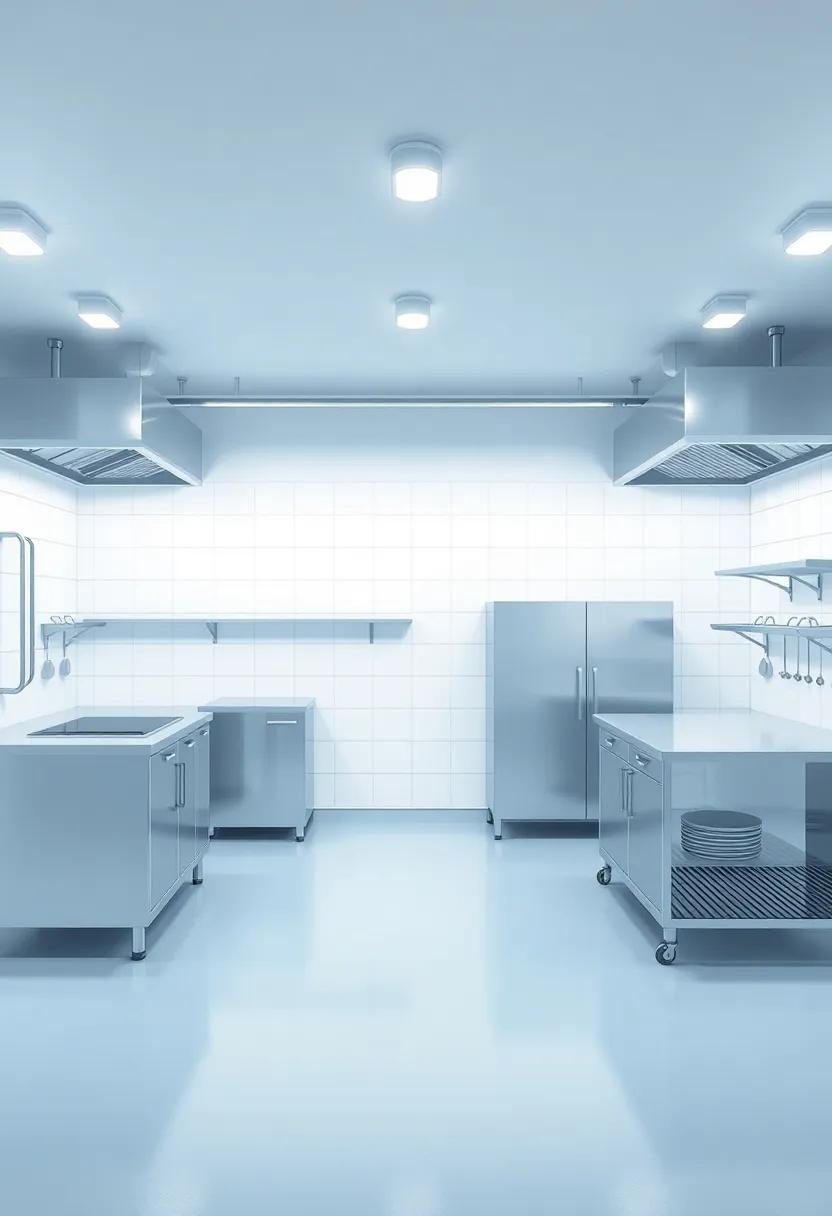
In the fast-paced world of high-volume cooking, having the right equipment can make all the difference in efficiency, safety, and culinary creativity. Selecting robust appliances tailored for industrial use not only enhances productivity but also ensures consistency in food quality. Essential pieces include:
- Commercial Ovens: Choose convection or combi ovens for even cooking and versatility.
- Heavy-Duty Mixers: Ideal for large batches, these should include various attachments for different tasks.
- Industrial Griddles: Perfect for cooking a variety of items simultaneously, saving time and energy.
- Dishwashers: High-capacity models ensure quick turnaround on clean dishes, crucial in a busy environment.
Additionally,investing in quality storage solutions can definitely help facilitate smooth operations amidst the hustle and bustle of the kitchen.Consider durable shelving units for ingredients and tools that meet food safety standards. Keeping ingredients organized and at your fingertips can drastically reduce prep time. useful storage options include:
| Storage Type | Features |
|---|---|
| Walk-in Refrigerators | Maintain freshness, very essential for high-volume ingredients. |
| Ingredient bins | keep dry products organized and easily accessible. |
| Shelving Racks | Maximize vertical space for pots,pans,and utensils. |
Innovative Storage Solutions to Enhance workspace Efficiency
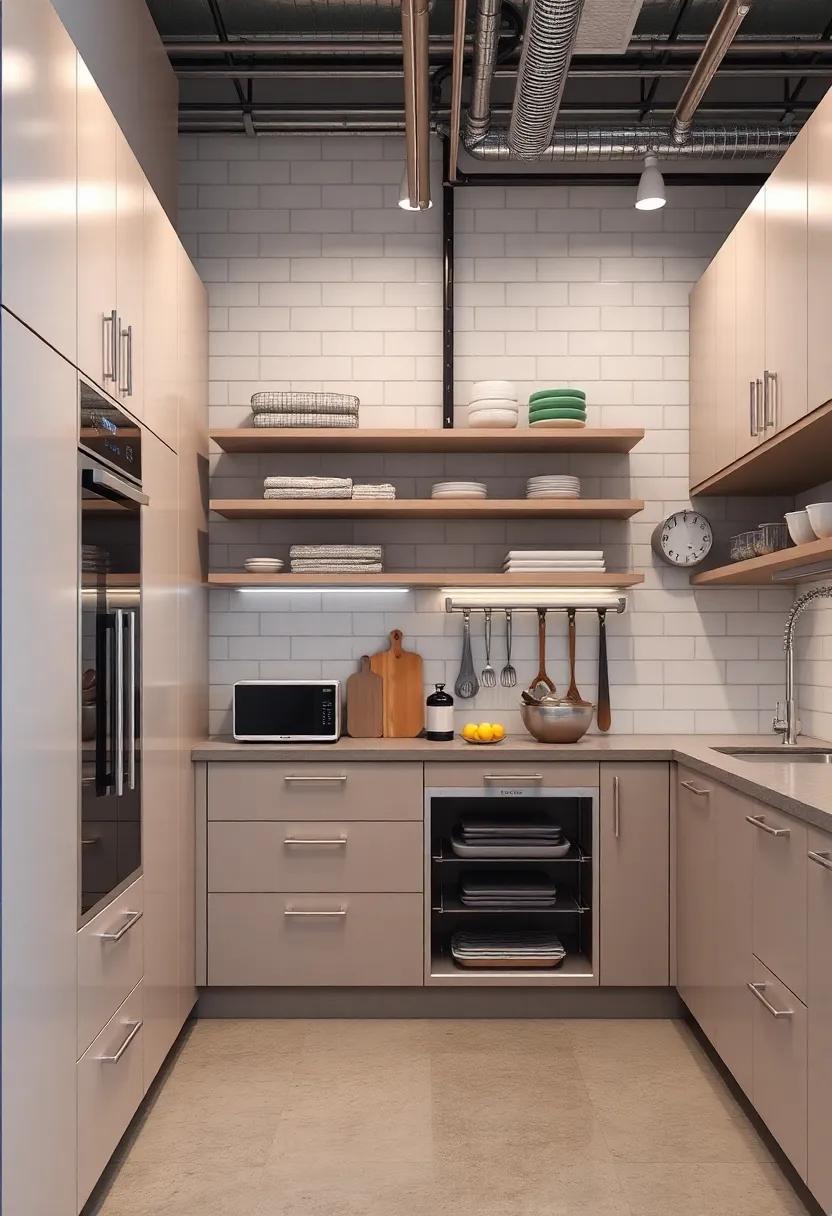
In the bustling environment of a culinary workspace,effective storage solutions can significantly streamline operations and save valuable time. By utilizing modular shelving units and multi-functional worktables,chefs and kitchen staff can maximize their space while keeping essential tools and ingredients within arm’s reach. Consider incorporating vertical storage systems that utilize wall space for pots, pans, and utensils, allowing for a decluttered countertop. These systems can be complemented by drawer organizers and categorically designed bins to simplify ingredient access and inventory management.
Another innovative approach to enhancing efficiency involves utilizing mobile storage carts for quick access to commonly used items. These carts can be easily transported throughout the kitchen and can include compartments for everything from spices to small appliances. For a visual depiction of effective storage options, refer to the table below:
| Storage Solution | Benefits | Ideal Use |
|---|---|---|
| Modular Shelving | Maximizes vertical space | Dry storage areas |
| Multi-Functional Worktables | Combines workspace and storage | Prep areas |
| Mobile Storage Carts | Flexible and accessible | On-the-go ingredient access |
Designing a Comfortable Break Area for Kitchen Staff Well-being
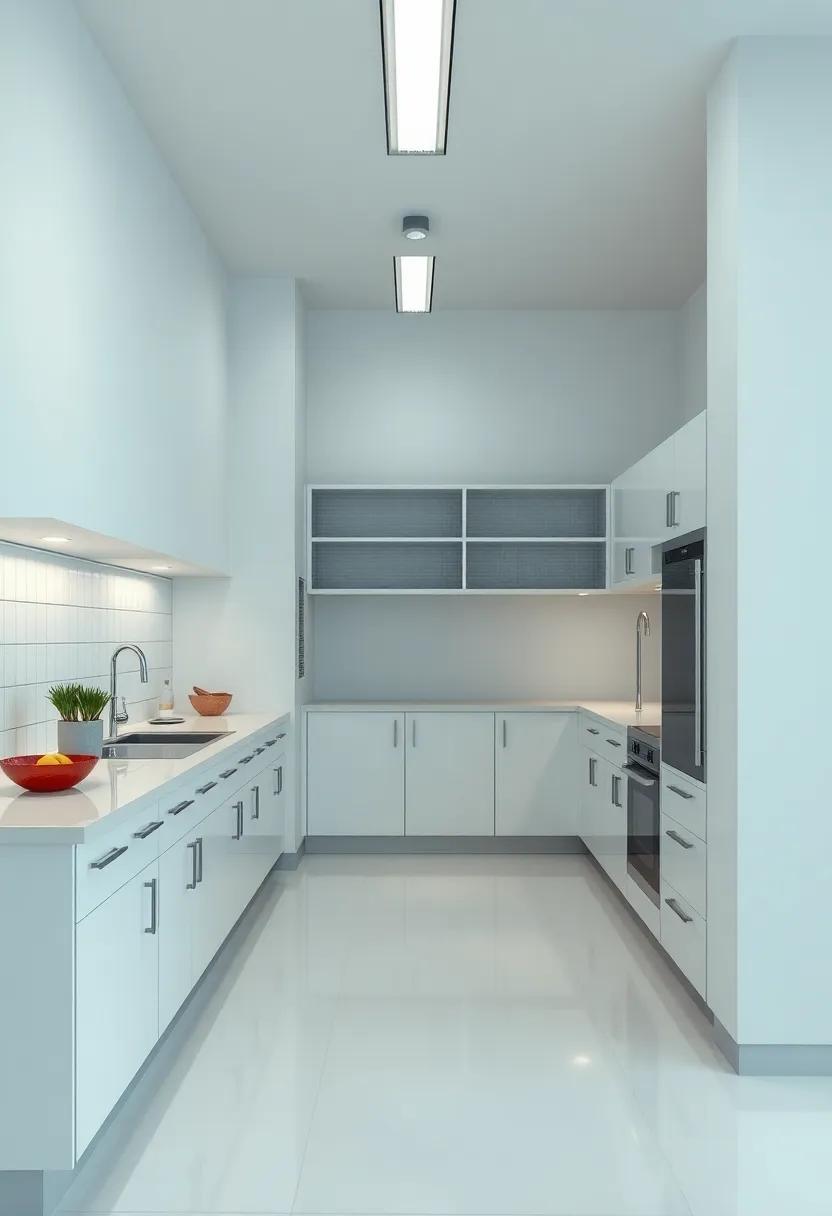
Creating a serene and inviting break area for kitchen staff is paramount in fostering a positive work environment. Comfortable seating and pleasant décor can transform an ordinary space into a rejuvenating retreat.Think about incorporating adjustable lounge chairs, cushioned benches, or even hammocks to encourage relaxation during breaks.Natural light should be maximized, whether through large windows or well-placed skylights, to uplift moods and enhance energy levels. Personal touches, such as plants or local artwork, can also create a sense of belonging and encourage team bonding.
It’s essential to facilitate not just relaxation, but also nutrition in the break area. By providing a selection of healthy snacks and hydration options, you can encourage staff to refuel properly. Consider the inclusion of a kitchenette or small coffee station equipped with essential appliances like a microwave or fridge. Below is a simple layout of an ideal break area setup:
| element | Description |
|---|---|
| Seating | comfortable and versatile for both relaxation and socializing. |
| Natural Elements | Incorporating plants and natural light to boost mood. |
| Nutrition Station | A designated area for healthy snacks and drinks. |
| Decor | artworks or personal touches that resonate with the team. |
Lighting Strategies to boost Morale and Productivity in Kitchens
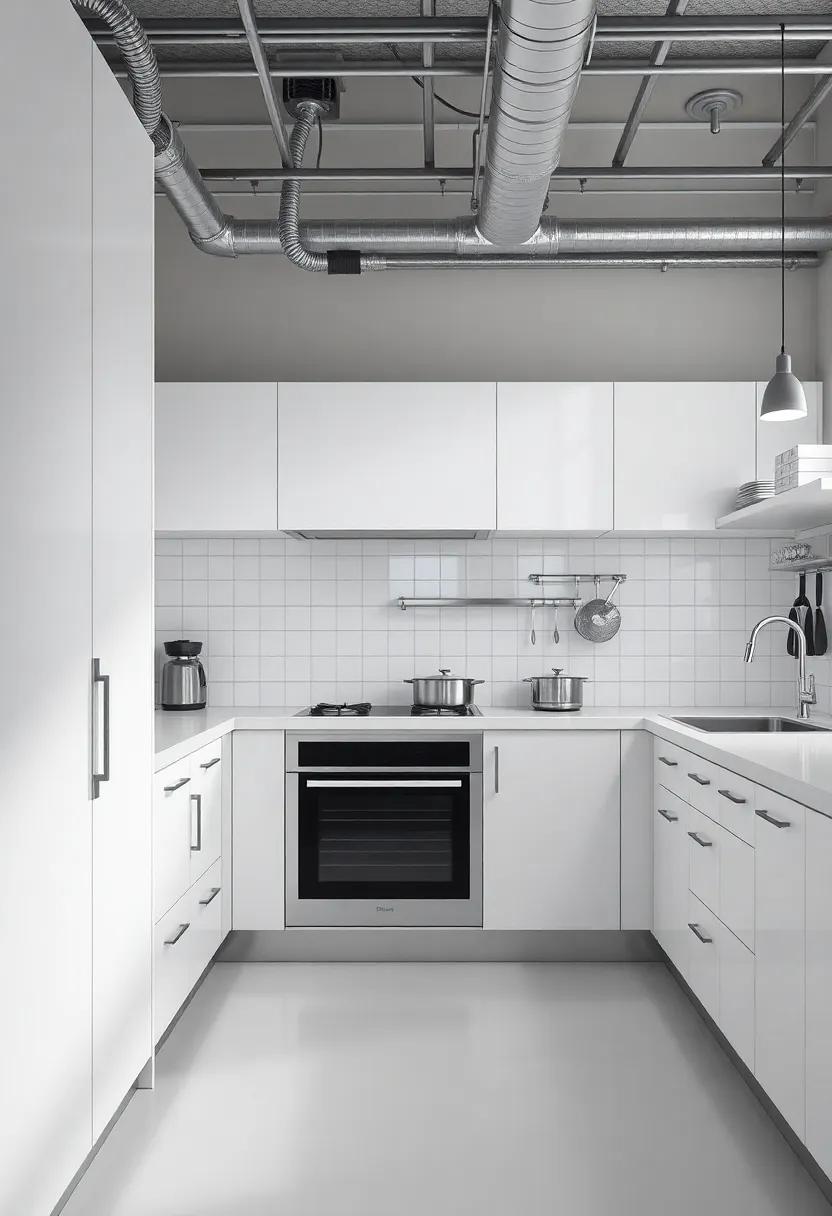
Effective lighting in kitchens is crucial for fostering an environment where culinary professionals can thrive. By incorporating a variety of lighting sources, you can create a well-lit workspace that enhances both visibility and mood.Consider the following strategies:
- task Lighting: Focus on specific work areas with bright, directional lights to ensure precision during food preparation.
- Ambient Lighting: Utilize soft, diffused lighting that fills the kitchen, promoting a warm, inviting atmosphere.
- Accent Lighting: Highlight key features such as art, herbs, or appliances to add personality and inspiration to the space.
Furthermore, the color temperature of your lights can significantly impact the ambiance. A warmer hue (around 2700K) creates a cozy feeling, while cooler tones (above 4000K) promote alertness and concentration. In addition, the strategic placement of lighting fixtures can help create zones within the kitchen that cater to different activities:
| Zone | Recommended Lighting |
|---|---|
| Prep Area | Bright LED Task Lights |
| Cooking Zone | High-Intensity Halogen Lighting |
| Dining Area | Warm Pendant or Ambient Lights |
Acoustics and Soundproofing Considerations for Busy Culinary Spaces
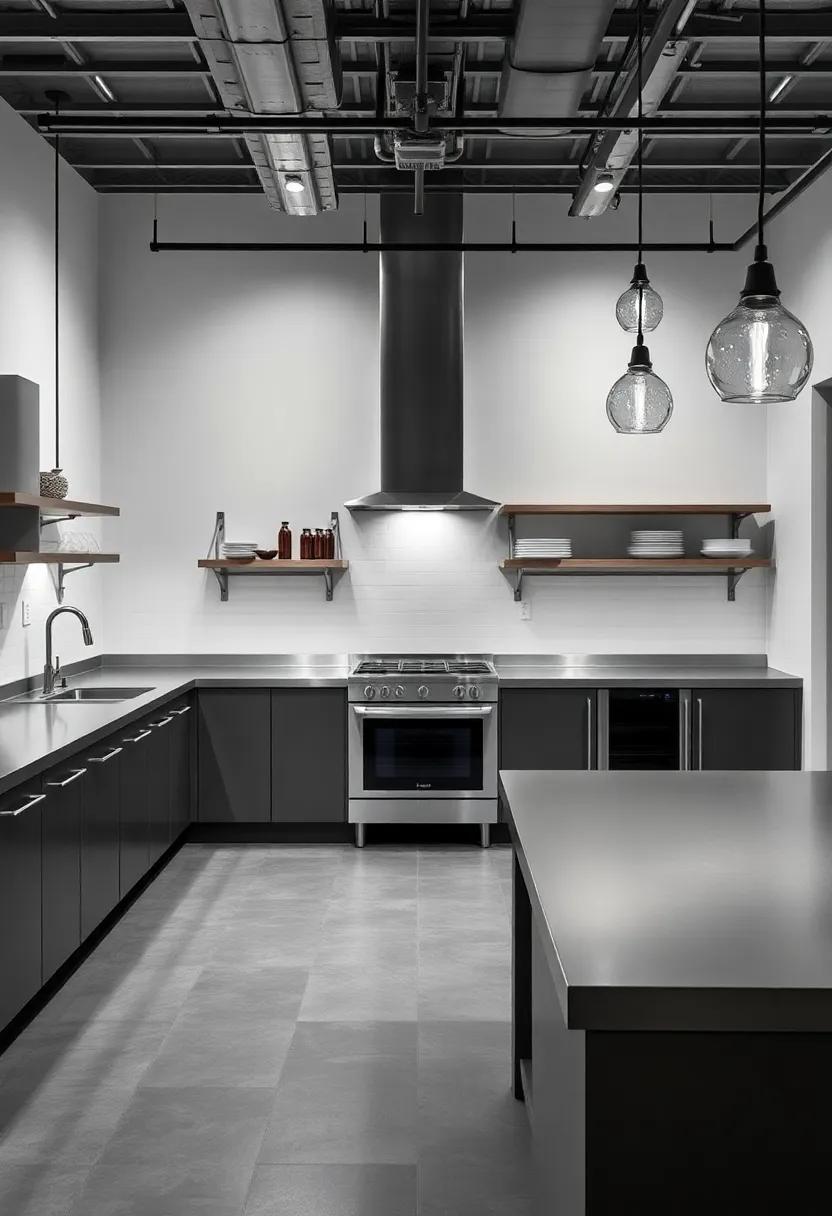
In the bustling environment of a busy culinary workspace, sound levels can reach peaks that disrupt dialog and diminish productivity. To mitigate excessive noise, it’s crucial to incorporate effective soundproofing measures. Consider using materials such as acoustic panels and sound-absorbing ceilings, which can significantly dampen sound reflections. Additionally, installing thick carpets or rubber flooring can help absorb sound, creating a more pleasant ambiance. When designing the layout, it’s beneficial to keep noisy equipment away from staff work areas, ensuring that communication remains clear and effective amidst the clamor of culinary activity.
Moreover, strategic planning plays a vital role in managing acoustics within the kitchen. The arrangement of kitchen units and workstations should promote a natural workflow while minimizing noise pollution. Options like open shelving can help maintain visibility and communication flow without being overly intrusive. Here’s a quick overview of effective soundproofing materials and techniques you may consider:
| Material/Technique | Benefits |
|---|---|
| Acoustic Panels | Reduces echo and improves sound clarity. |
| Sound-Absorbing Ceilings | Dampens noise from above and reduces overall sound levels. |
| Rubber Flooring | Minimizes impacts and footstep noise. |
| Strategic Layout | Facilitates better sound management and workflow. |
Introducing Smart Technology to Streamline Kitchen Processes
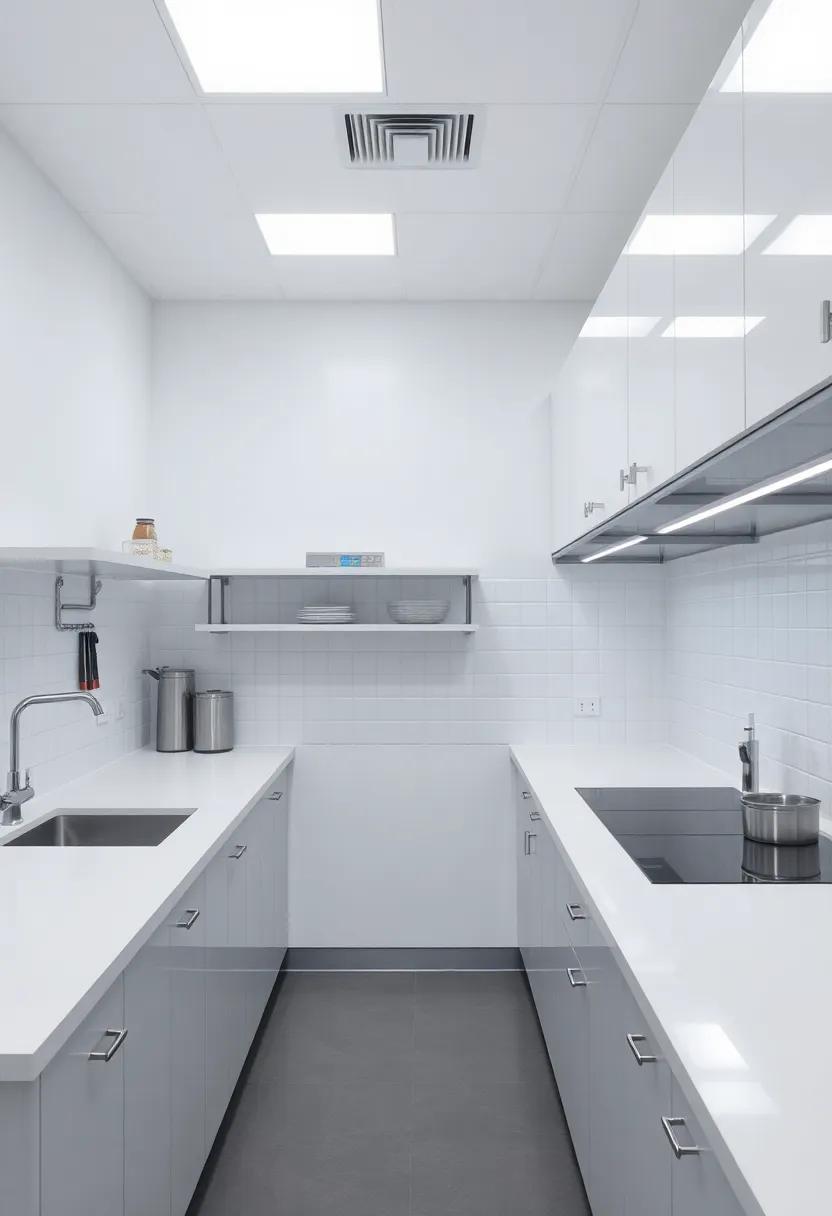
In the ever-evolving world of culinary spaces,smart technology has emerged as a game changer,revolutionizing how kitchens operate. With the integration of automated systems, chefs can now focus on creativity rather than mundane tasks. Imagine a kitchen where appliances communicate seamlessly: ovens that adjust cooking times based on the dish being prepared, and refrigerators that monitor ingredient freshness and suggest recipes based on what’s available. The benefits of such innovations extend beyond convenience, enhancing efficiency and reducing food waste—both critical factors in any industrial kitchen.
Consider the advantages that smart technology brings to various kitchen processes:
- Real-time inventory tracking: Keeps tabs on supplies and alerts staff when stocks are low.
- Smart ovens: Enable precision cooking, ensuring every dish is prepared to perfection.
- Energy management systems: Optimize power usage, lowering operating costs and environmental impact.
- Remote monitoring: Allows chefs to oversee kitchen operations from anywhere, ensuring everything runs smoothly.
| Smart Technology | Benefit |
|---|---|
| Automated Cooking Systems | Precision and consistency |
| Inventory Management Software | Reduced waste |
| Energy Management solutions | Cost efficiency |
| Connected Refrigeration | Ingredient freshness |
by adopting smart technology, kitchens not only thrive in efficiency but also elevate the overall dining experience by ensuring that the highest standards of food quality and innovation are met. As culinary professionals embrace these advancements, the future of industrial kitchens looks brighter, more sustainable, and increasingly capable of meeting the demands of a fast-paced world.
Utilizing Color Schemes for Mood Enhancement in Cooking Areas
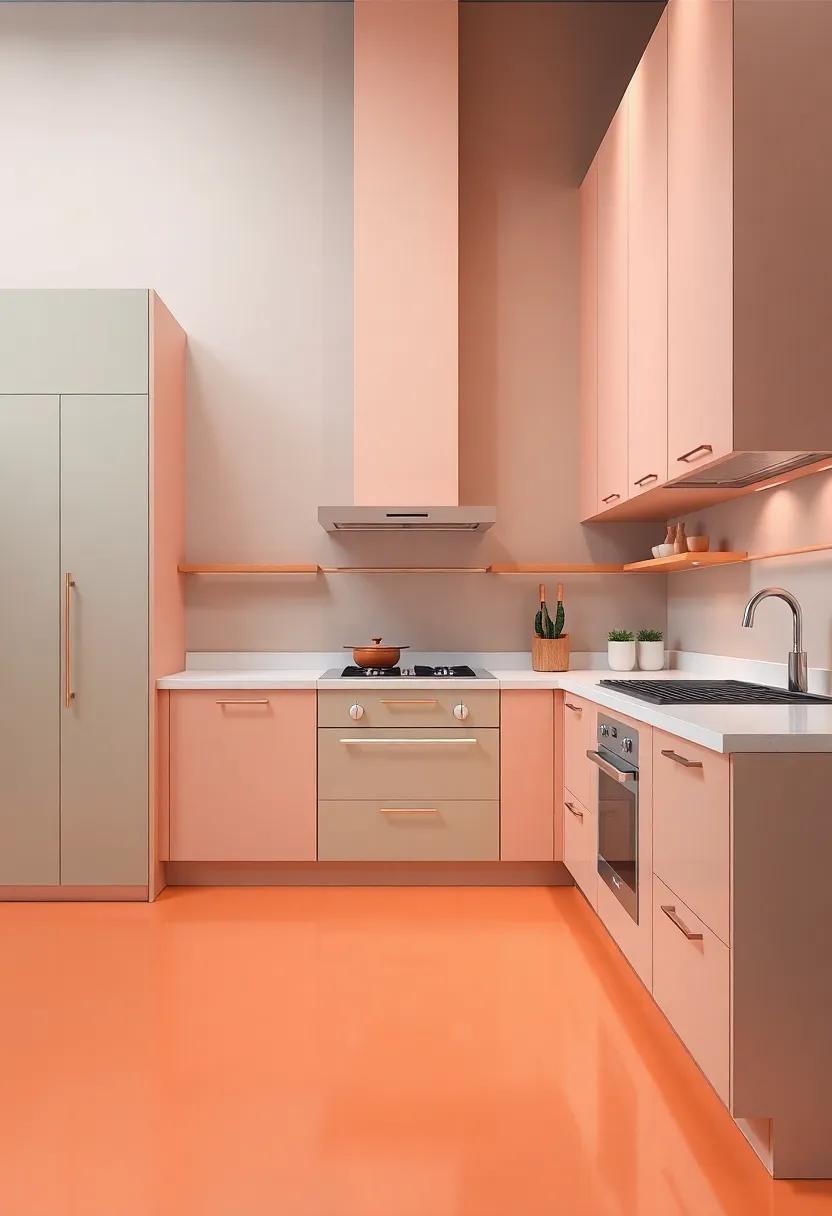
When it comes to enhancing the atmosphere of cooking areas, color schemes wield tremendous power. Colors can evoke emotions and influence behavior, making it essential to choose the right palette for your culinary space. Warm tones such as reds and oranges can stimulate appetite and energy,encouraging creativity and zest when preparing meals. In contrast, cool hues like blues and greens promote calmness, fostering a tranquil environment where one can focus on meticulous culinary techniques. Nonetheless of the space’s size, infusing your kitchen with a thoughtful color palette can inspire a unique culinary experience.
Consider incorporating accents and contrasts to heighten the aesthetic appeal and functionality of your kitchen. For example, mixing neutral cabinetry with vibrant backsplashes can create a visually striking balance. Additionally, integrating color into different elements can resonate with the kitchen’s overall mood. Here are some suggestions:
- Wall Colors: Soft creams for warmth or muted grays for a modern touch.
- Cabinet Finishes: Bold navy or emerald greens as statement pieces.
- Hardware Accents: Matte black or brushed brass for a complex flair.
- Textiles: Use vibrant dish towels and rugs to add pops of color.
| Color | Emotion | Recommended Use |
|---|---|---|
| Red | Energy | Accent walls or decor elements |
| Green | Calm | Cabinetry or plant displays |
| White | Freshness | main wall color |
| Yellow | Happiness | Dishes and small kitchen tools |
Incorporating outdoor Elements into Indoor Kitchen Designs
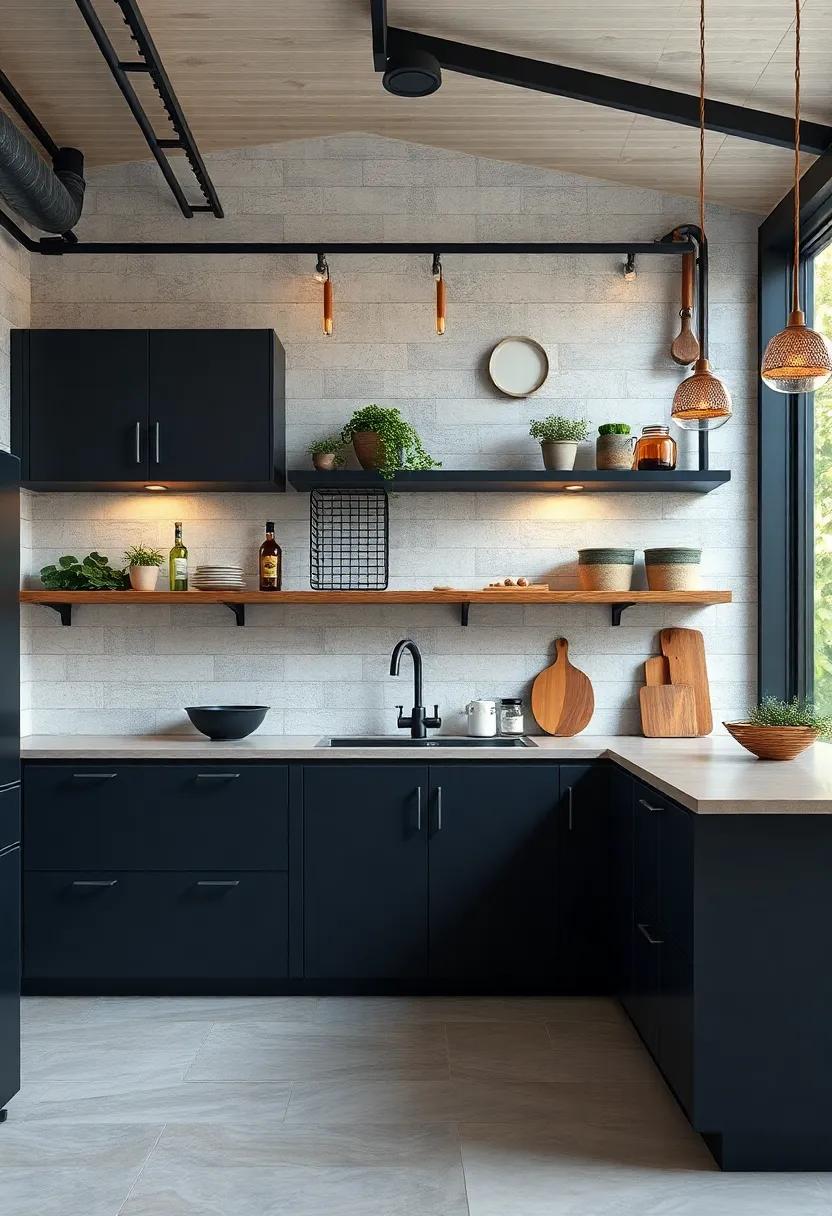
Embracing nature in your kitchen can create a harmonious atmosphere that inspires culinary creativity. One effective way to incorporate outdoor elements is through the use of natural materials. Consider integrating reclaimed wood beams or stone accents in your kitchen design, which evoke a sense of rustic authenticity. Additionally, large windows can draw the outdoors inside, allowing sunlight to flood the space and offering picturesque views of your garden.You might also explore adding indoor planters or herb gardens,giving you easy access to fresh ingredients while enhancing the aesthetic appeal with vibrant greenery.
Another innovative approach to blend outdoor elements is through color and texture. Opt for earthy tones in your cabinetry and countertops, such as deep greens, rich browns, and creams, to mimic the natural landscape. Use textured fabrics for seating or window treatments that echo outdoor elements,like linen or jute. Consider incorporating a feature wall adorned with plants, or artwork inspired by nature, to create a focal point that celebrates the beauty of the outdoors. To add an extra dimension, think about integrating water features or subtle lighting that resembles natural sunlight, transforming your kitchen into a serene oasis.
Crafting a Functional Pantry That Supports Culinary Creativity
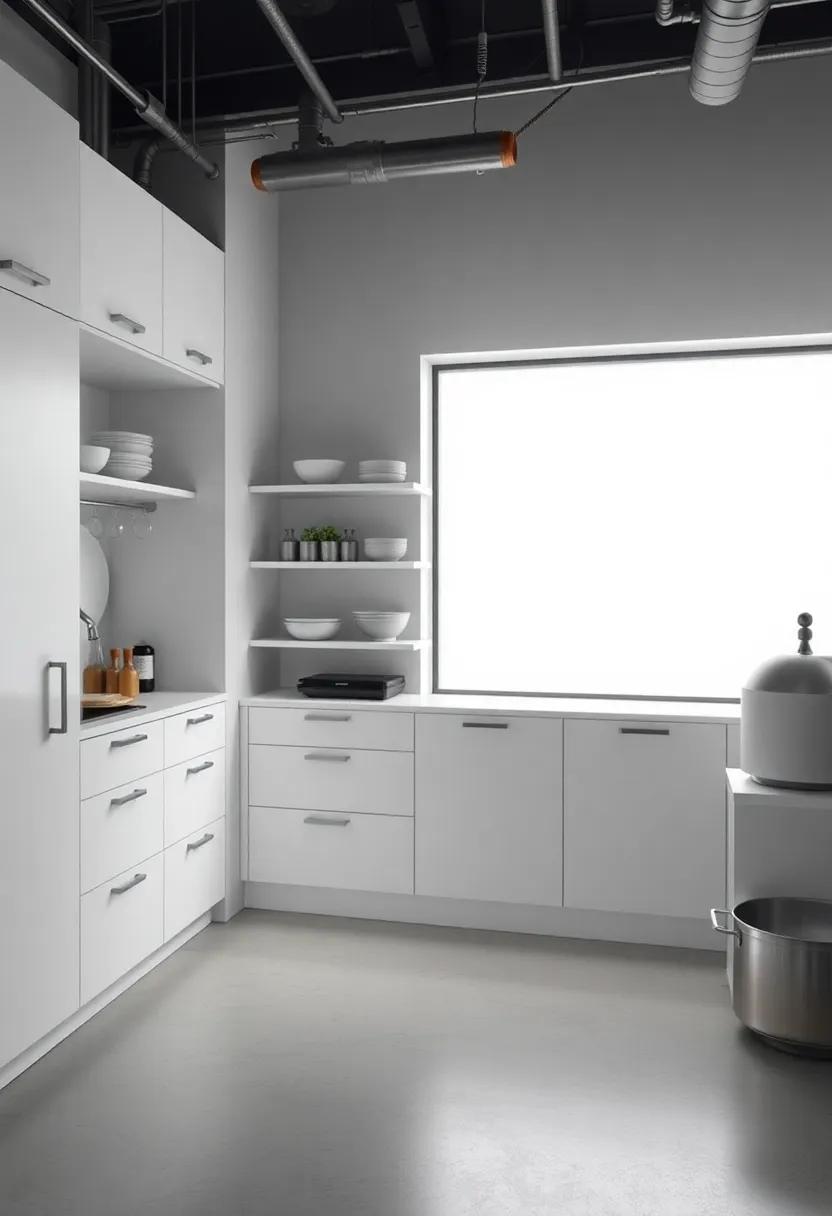
Creating an efficient pantry is a foundational step toward elevating your culinary experience. The key is to consider not just storage, but also accessibility and organization.Here are some essential elements to include:
- Open Shelving: Allows for easy visibility and access to frequently used items.
- Clear Containers: Helps to identify contents at a glance while keeping ingredients fresh.
- Labeling: A clear labeling system promotes organization and saves time during meal prep.
- Zones: Establish specific areas for baking, spices, and snacks to streamline your cooking process.
Consider incorporating versatile storage solutions such as modular racks or carts that can be easily reconfigured.The materials you choose can also enhance both functionality and aesthetic appeal. Consider the following layout options:
| Material | Benefits | best For |
|---|---|---|
| metal | Durable and easy to clean | Heavy-duty storage |
| Wood | Warm aesthetic, sturdy | Display and storage |
| Plastic | Lightweight and affordable | Labeling and organization |
Exploring Ventilation Solutions for cleaner and Safer Cooking Spaces
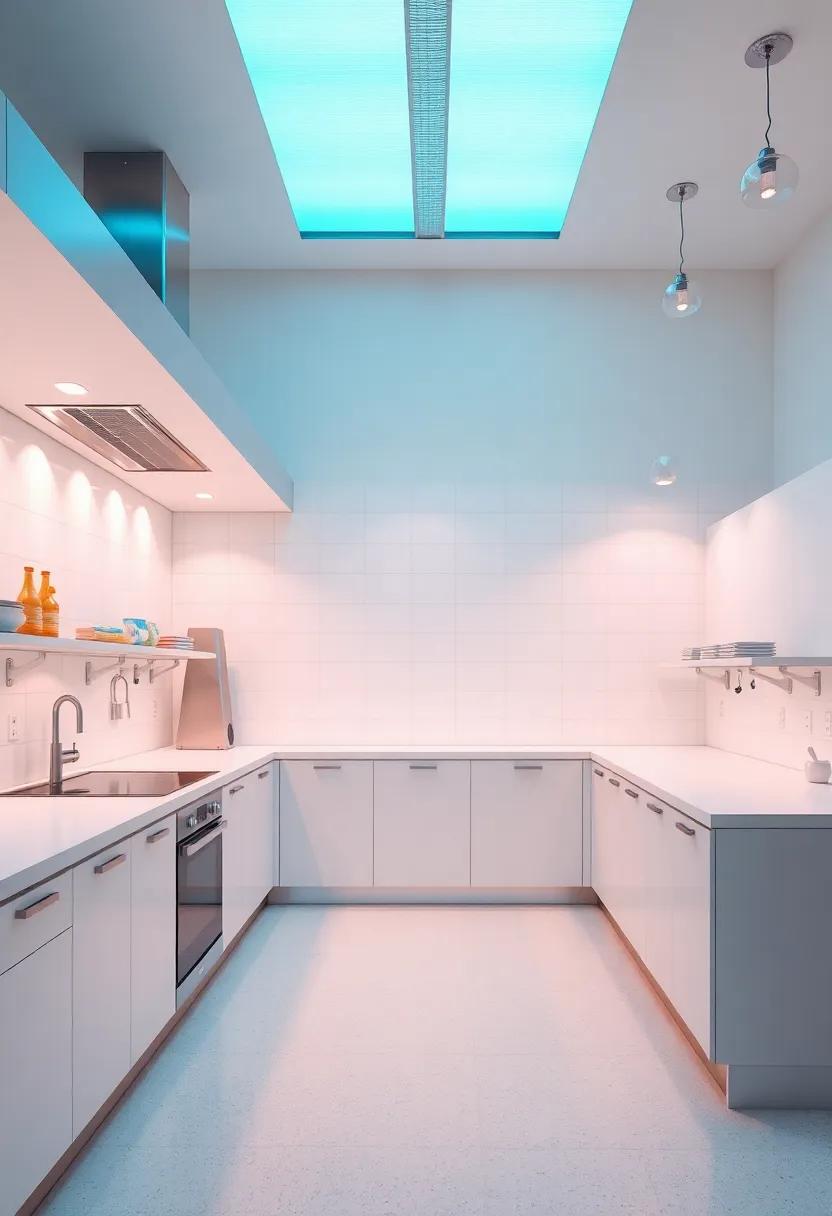
ensuring optimal ventilation in commercial kitchens is crucial for promoting a healthy cooking environment. Adequate ventilation not only reduces heat and moisture but also diminishes harmful smoke and odors. To achieve an effective solution, consider implementing a combination of mechanical and natural ventilation systems, which can include:
- Exhaust Hoods: Essential for removing smoke, steam, and grease from the cooking area.
- Duct Systems: Designed to carry away pollutants while ensuring proper airflow.
- Makeup Air Units: Replace the air being exhausted,maintaining a balanced environment.
- Open Windows and Vents: Utilizing natural airflow can significantly enhance air quality.
It’s important to analyse the specific needs of your kitchen to select appropriate ventilation solutions. For a more structured approach,the following table outlines common types of ventilation systems and their benefits:
| Ventilation Type | Benefits |
|---|---|
| Canopy range Hoods | Targets steam and smoke directly,enhancing air quality. |
| Wall-Mounted Hoods | Space-saving design suitable for smaller kitchens. |
| Downdraft Systems | Effective in open layouts, capturing smoke directly at source. |
| Heat recovery Ventilators | Recycles energy efficiently, reducing operational costs. |
Ensuring Compliance with Health and Safety Regulations in design
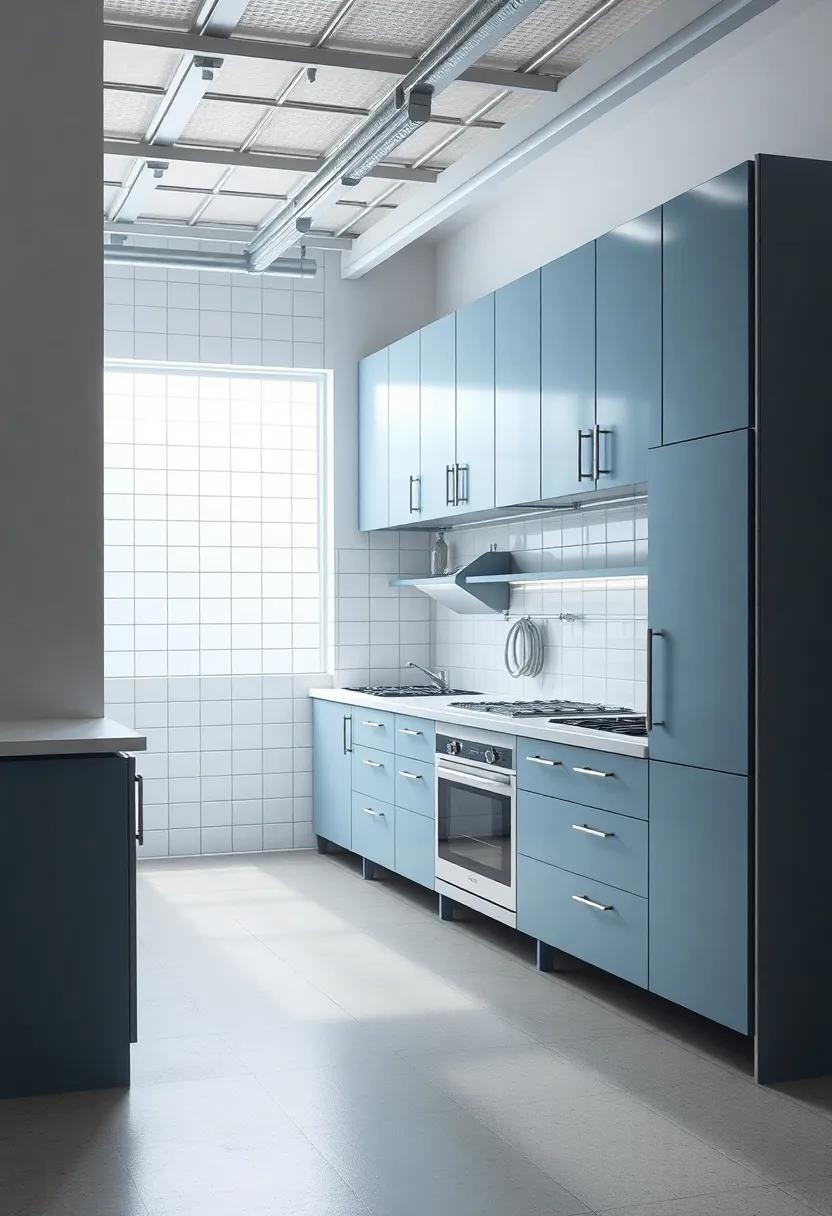
In the fast-paced world of culinary spaces, ensuring adherence to health and safety regulations is not just a formality but a foundational requirement. Designers must integrate essential features that not only comply with local codes but also promote an environment that prioritizes food safety. When crafting industrial kitchen units, elements such as ventilation systems, cleanable surfaces, and appropriate storage facilities must be meticulously planned. This includes using materials that are resistant to corrosion and easily sanitized, thereby minimizing the risk of cross-contamination.
Moreover, layout plays a pivotal role in maintaining compliance. A well-thought-out kitchen design facilitates an effective workflow while ensuring that hygiene is never compromised. When planning your kitchen space, consider the following aspects:
- Accessibility: Ensure that all areas, including fire exits and equipment, are easy to access.
- Zones: Clearly define areas for raw preparation, cooking, and serving to mitigate contamination.
- Waste Disposal: Integrate designated waste areas to streamline garbage management.
Utilizing a table to track essential compliance features can help streamline the design process:
| Feature | purpose | Compliance Standard |
|---|---|---|
| Handwashing Stations | promotes sanitation | Health Dept. Regulation |
| Fire Safety Equipment | Prevents hazards | NFPA Guidelines |
| Temperature Control Units | Maintains food safety | FDA Food code |
Artistic Elements to Create a welcoming Environment for Diners
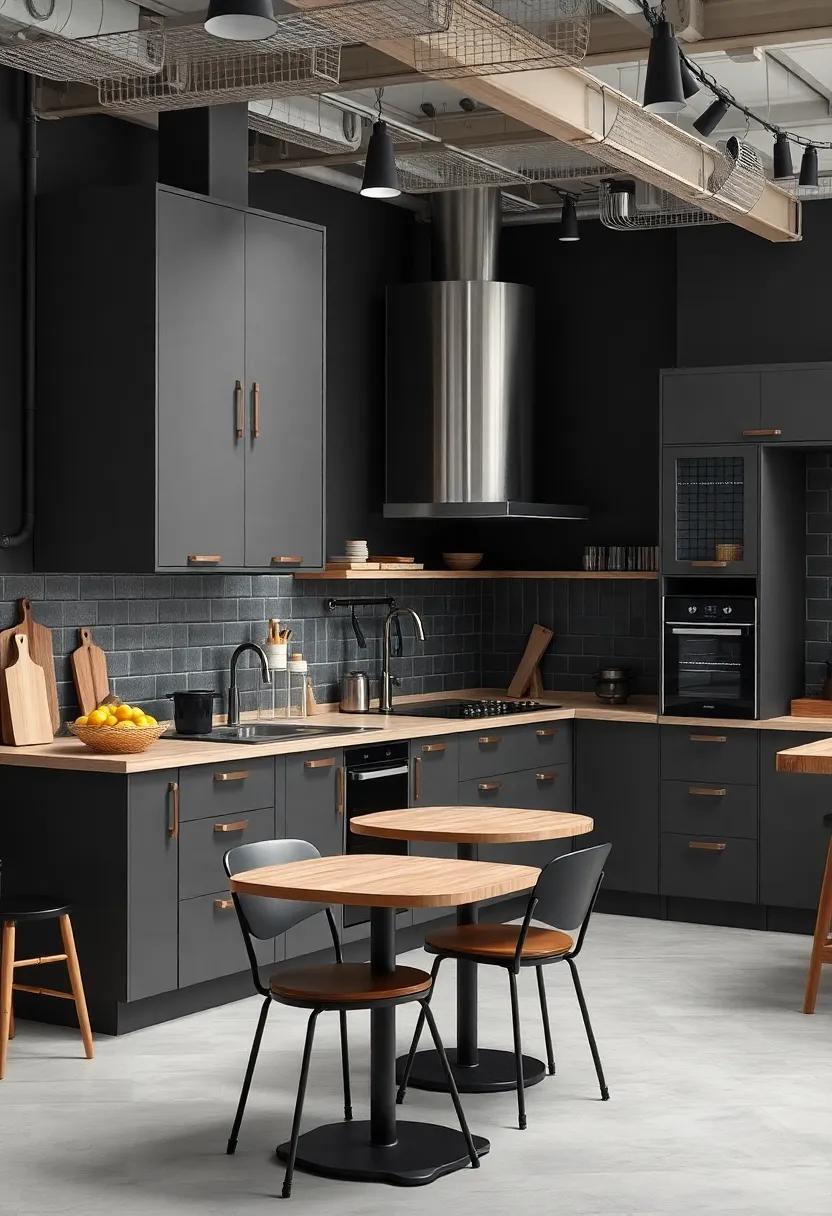
Creating a convivial atmosphere for diners hinges significantly on the thoughtful integration of artistic elements. Striking visuals can transform a mundane space into a memorable dining experience. Consider incorporating local artwork, which not only showcases regional talents but also establishes a connection with the community. Adding vibrant colors through wall art or decor can evoke warmth and happiness, enhancing the overall mood. Furthermore, the strategic use of lighting is crucial—soft, adjustable lighting instills comfort, while unique fixtures can become conversation starters.
Additionally, the arrangement of these artistic components plays a pivotal role. Utilizing natural materials like wood and stone complements the industrial vibe,bridging the gap between raw and refined.Integrate textured fabrics in seating areas, providing both comfort and aesthetic appeal. To visualize these elements better, here’s a simple table showcasing essential components:
| Artistic Element | Purpose |
|---|---|
| Local Artwork | Showcases community talent |
| Vibrant Colors | Evokes warmth and enhances mood |
| Soft Lighting | Creates a comfortable atmosphere |
| Natural Materials | Blends industrial and natural aesthetics |
| Textured Fabrics | Provides comfort and visual interest |
Understanding the Importance of Workflow Patterns in Kitchen Design
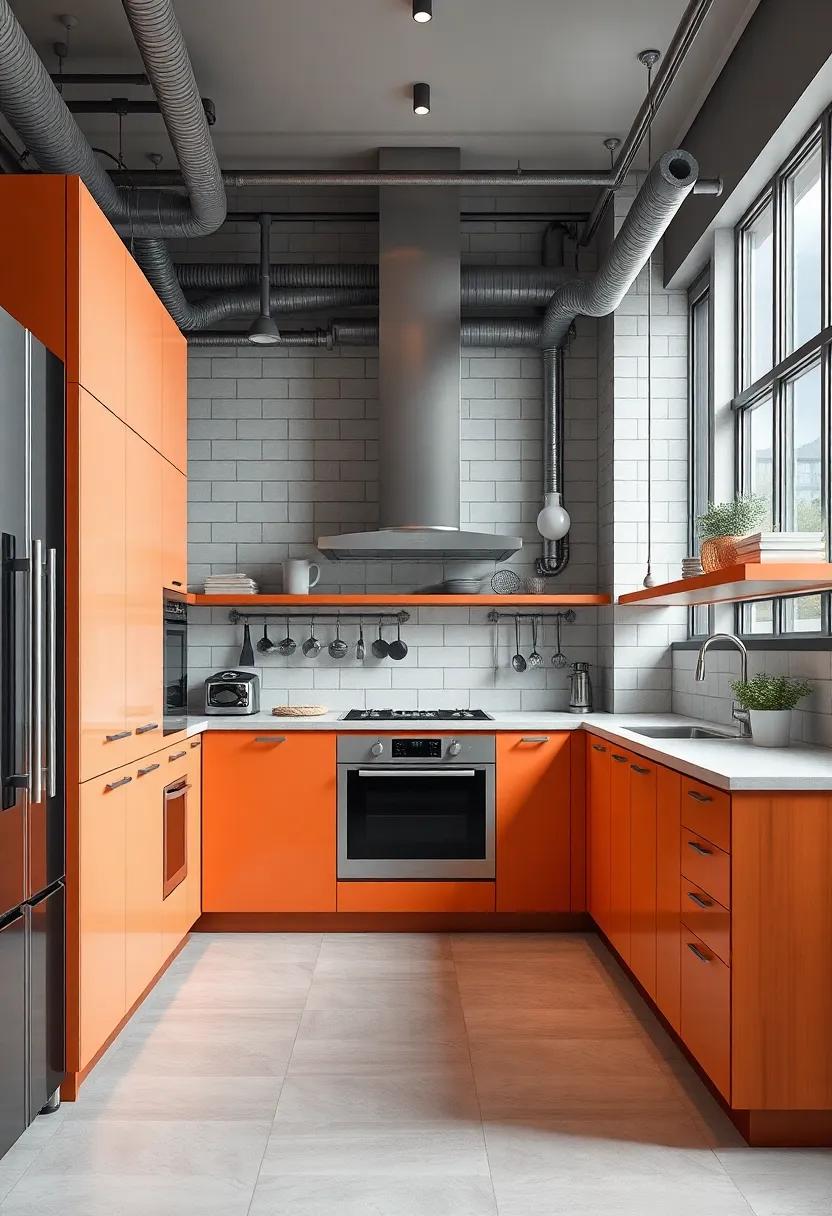
In industrial kitchen design, efficiency and productivity are paramount, and understanding workflow patterns is essential for creating a harmonious culinary environment. A well-planned layout not only optimizes space but also enhances the speed of operations, ultimately improving the overall dining experience. By organizing stations based on the movement of chefs and the sequence of tasks, kitchens can reduce congestion and minimize the risk of accidents. Key workflow patterns may include:
- Assembly Line: Ideal for high-volume production,where a single dish undergoes multiple stages before completion.
- Zone Style: Different areas are designated for specific tasks, such as prep, cooking, and plating, promoting specialization.
- Process Flow: Ensures a smooth transition of ingredients from receiving to storage and ultimately to service.
Incorporating these workflow patterns into the design process not only fosters efficiency but also encourages creativity among chefs. By considering the natural flow of a kitchen, designers can create spaces that facilitate easy communication and teamwork. As an example, an efficient Cooking Zone can be equipped with industrial kitchen units that provide ample surface area and storage options, while a dedicated Preparation Zone can ensure that all necessary ingredients and tools are within arm’s reach. Additionally, the following table highlights how different kitchen layouts can influence worker productivity:
| Layout Type | Advantages | Best For |
|---|---|---|
| Assembly Line | Streamlined operations | High-volume catering |
| Zone Style | Enhanced focus & specialization | Diverse menus |
| Process Flow | Minimal backtracking | Efficient service |
Engaging Visual Displays to showcase Culinary Creations
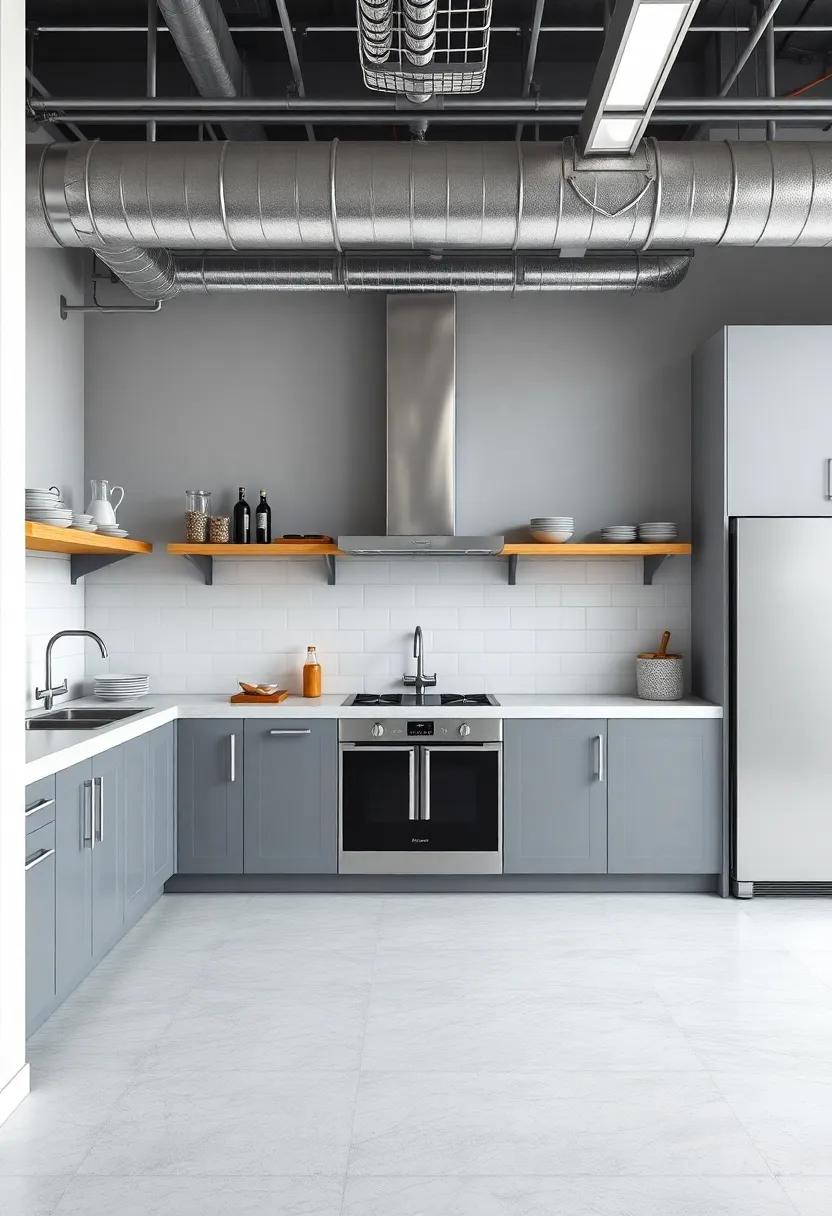
In the bustling heart of an industrial kitchen, where the clatter of pots and the sizzle of pans are the backdrop to culinary artistry, engaging visual displays can elevate the dining experience to new heights. consider incorporating open shelving units with decorative jars filled with vibrant herbs and spices, showcasing not only the ingredients but also the creativity behind each dish. Glass-front cabinets allow patrons a glimpse into the kitchen’s inner workings, creating a connection between the food being prepared and the chefs who craft it. Additionally, utilizing thematic decor—such as seasonal ingredients or local artisan products—can enhance the ambiance and draw attention to the unique offerings of the establishment.
Moreover, the effective use of lighting can transform a culinary space into an immersive experience. Warm, ambient lighting can enhance the colors and textures of dishes, making them more visually appealing. Implementing feature walls or backlit menus can dramatically emphasize signature items and specials, creating a focal point that attracts diners’ attention. To reinforce this concept, consider using a mix of materials for display; for example, combining wood, metal, and glass elements can provide an inviting contrast that resonates with the industrial aesthetic. By thoughtfully designing visual displays, kitchens not only showcase their culinary creations but also invite guests to engage with the experience on a deeper level.
Budget Considerations When Investing in industrial Kitchen Units
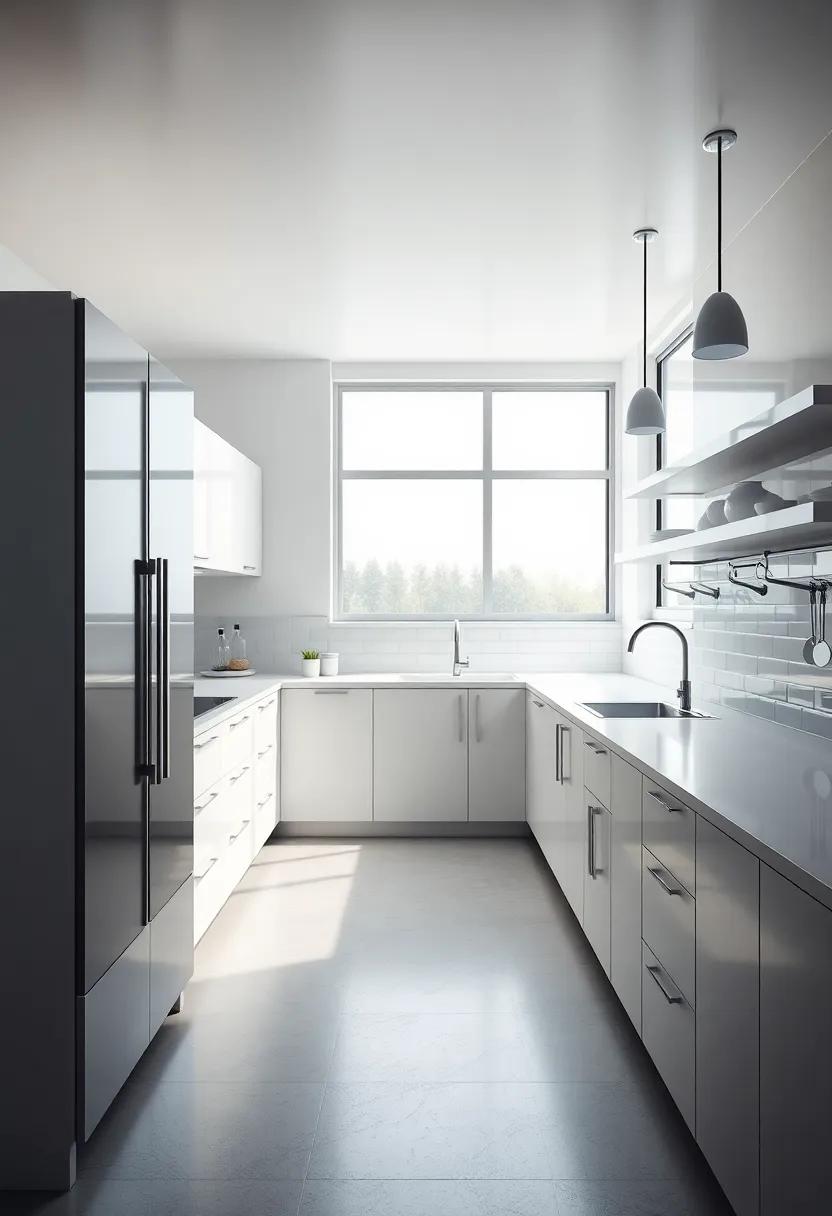
When embarking on the journey of investing in industrial kitchen units, it’s crucial to keep a close eye on your budget. Understanding the total costs involved will help in decision-making and ensure financial feasibility. Consider the initial investment in equipment, labor, and installation. Additionally, don’t overlook ongoing expenses such as maintenance, utilities, and potential renovations in the future. Here are some budget areas to review:
- Equipment Costs: Prices can vary significantly based on brand and functionality.
- Installation Fees: Hiring professionals might be necessary to ensure proper setup.
- permits and Licenses: Local regulations may require specific documentation.
- Operating Expenses: keep track of energy consumption and routine maintenance.
Furthermore, creating a well-thought-out financial plan can mitigate risks and enhance your operational efficiency. To assist in budgeting, it helps to develop a comparative table analyzing various suppliers and equipment options. This clear approach to pricing will facilitate better choices and potentially highlight savings in long-term investments.
| Supplier | Equipment Type | Estimated Cost |
|---|---|---|
| Supplier A | commercial Oven | $5,000 |
| Supplier B | Refrigeration Unit | $3,500 |
| Supplier C | Food Prep Station | $2,000 |
Wrapping Up
As we close the chapter on our exploration of transforming culinary spaces through the lens of industrial kitchen units, it becomes evident that the journey to culinary excellence requires more than just passion; it demands a thoughtfully designed environment. Whether you are a budding chef, a seasoned restaurateur, or an innovator in the food industry, the right kitchen setup can significantly enhance the efficiency and creativity of your culinary endeavors.
From optimizing workflow to integrating state-of-the-art equipment, every choice made in the design process can lead to a transformative experience—one that not only meets the demands of high-volume cooking but also inspires innovation and collaboration. Embracing the principles outlined in this guide will help you navigate the complexities of setting up a functional kitchen that is not only aesthetically pleasing but also adaptable to the ever-evolving landscape of food service.
As you embark on this transformative journey, remember that an industrial kitchen is not just a space for cooking; it is indeed a canvas for your culinary artistry. May your kitchen be filled with the sounds of sizzling pans, the aroma of spices, and the laughter of those who gather to share in the magic of food. Happy cooking!
